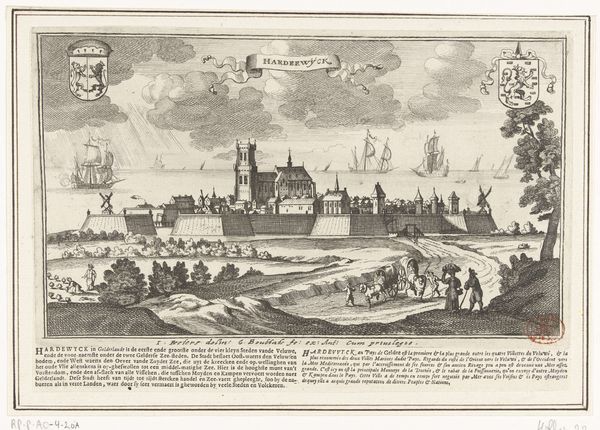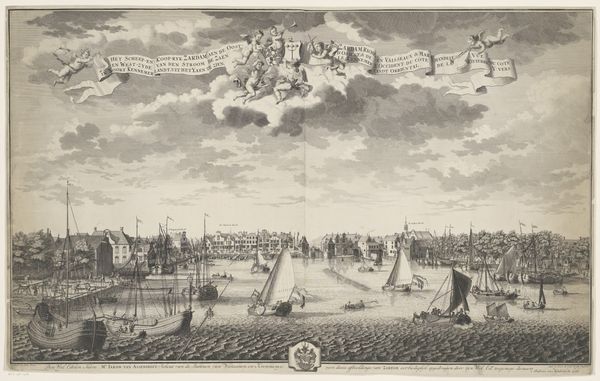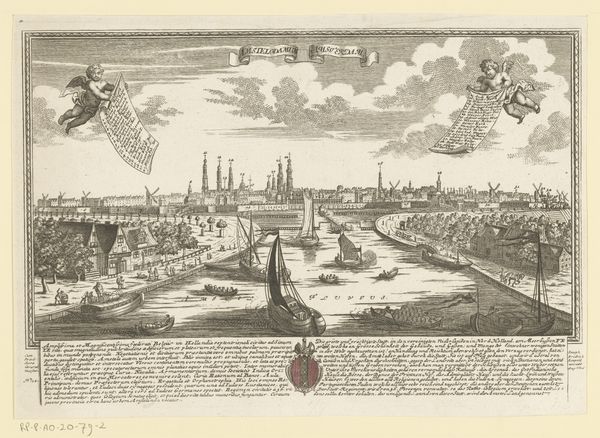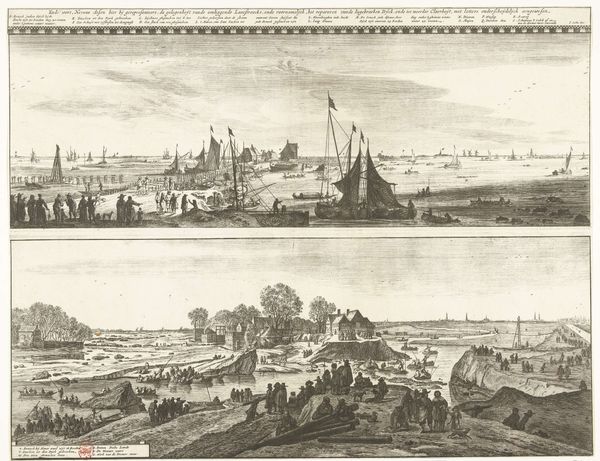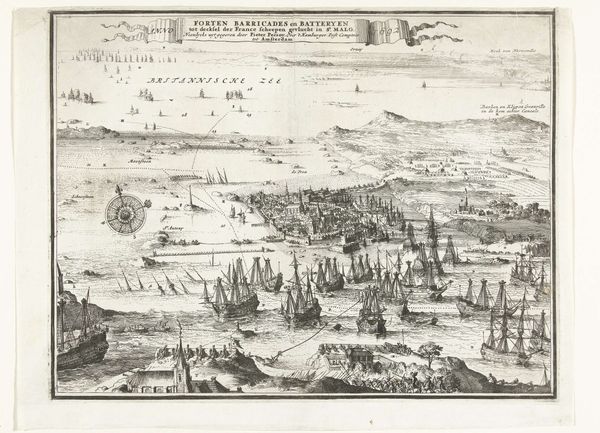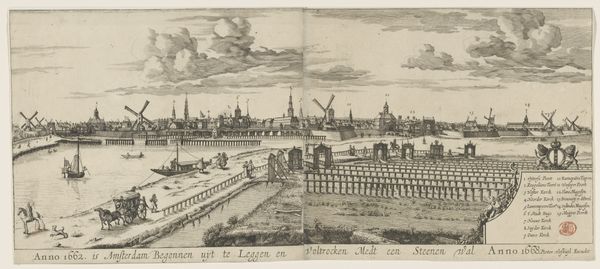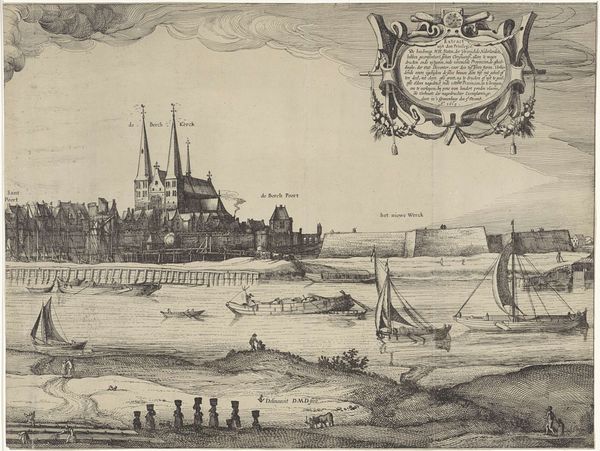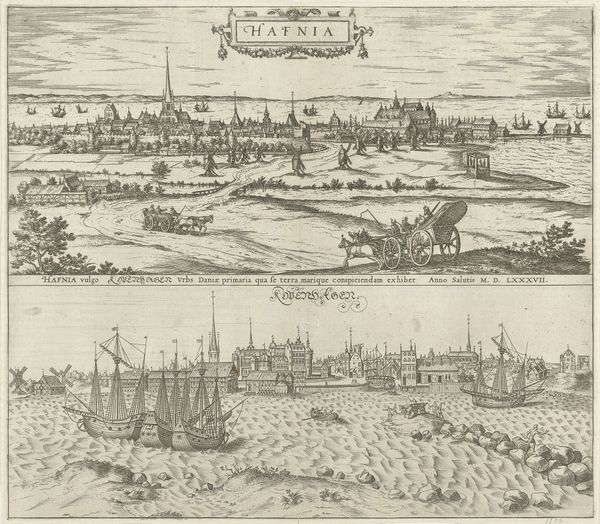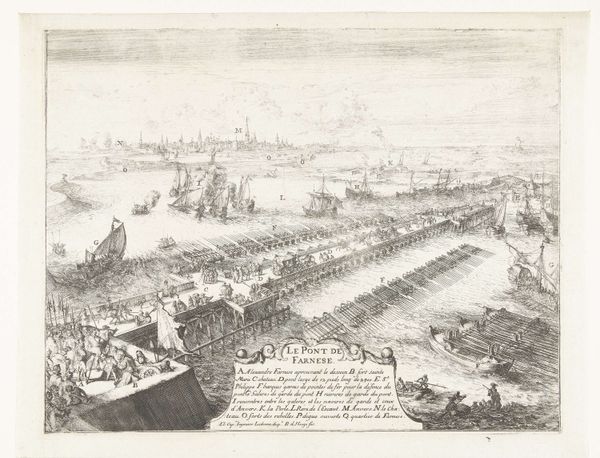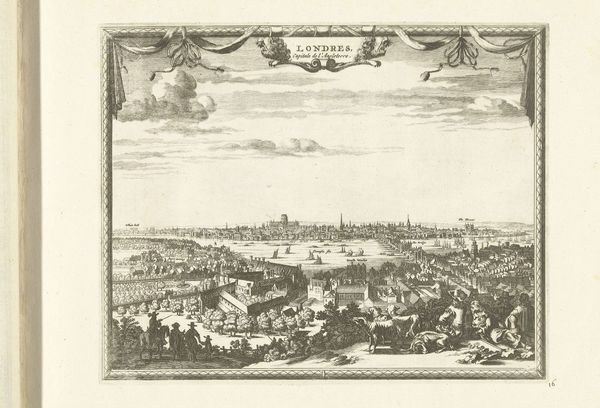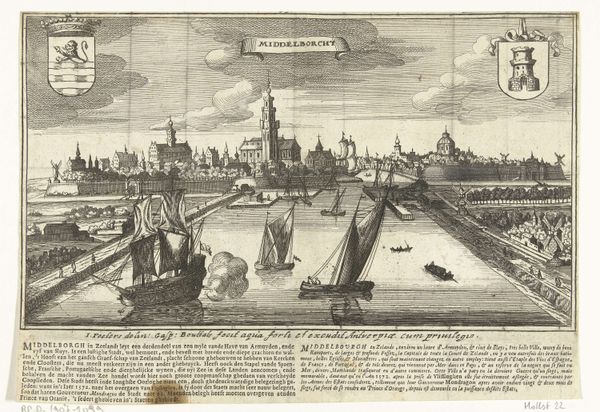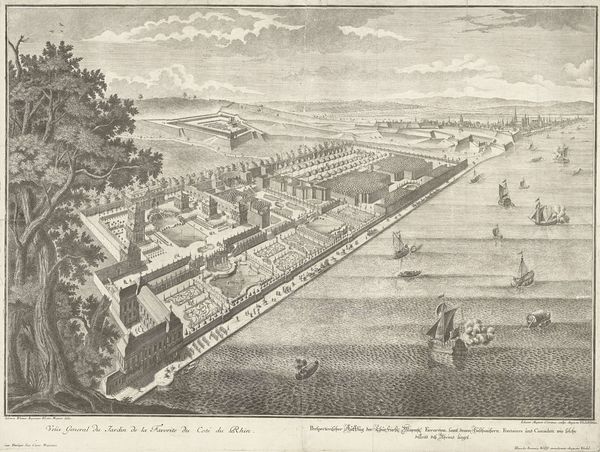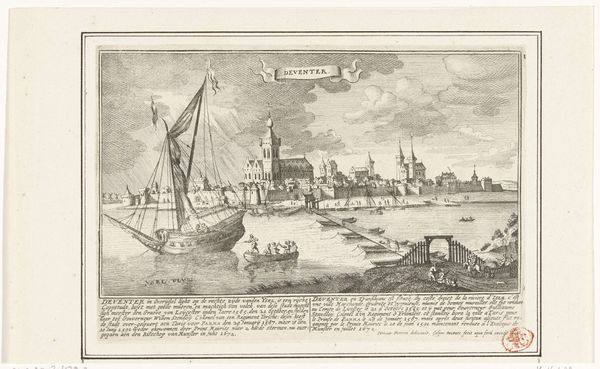
Profiel van Amsterdam met de nieuwe bolwerken aan de landzijde van de Amstel, 1669 1669
0:00
0:00
print, engraving
#
comic strip sketch
#
aged paper
#
baroque
#
dutch-golden-age
# print
#
old engraving style
#
landscape
#
personal sketchbook
#
sketchwork
#
pen-ink sketch
#
pen work
#
sketchbook drawing
#
cityscape
#
storyboard and sketchbook work
#
sketchbook art
#
engraving
Dimensions: height 407 mm, width 545 mm
Copyright: Rijks Museum: Open Domain
Curator: It feels incredibly detailed, but also somewhat austere. Is this the Amsterdam cityscape? Editor: It is. What we have here is "Profiel van Amsterdam met de nieuwe bolwerken aan de landzijde van de Amstel", a 1669 print by Pieter Rodingh. The piece documents the profile of Amsterdam, showcasing its new bulwarks on the Amstel River side. It gives me a sense of the urban planning of the time. Curator: The starkness of the print almost amplifies the city's ambition. Look at the way the lines create such a sense of depth. Considering the socio-political context of 17th century Amsterdam, do you see this depiction as a form of civic promotion, highlighting the city's strength and modernity through its infrastructure? Editor: Absolutely. Rodingh’s choice of the engraving medium itself speaks to production and dissemination, doesn't it? The printing process, requiring skilled labor, plates, ink – all vital components to create multiples meant for distribution. This isn’t just art for art’s sake; it's a commodity designed to shape public perception and instill pride in the city. The availability of the copies highlights its role in creating a sense of shared identity and civic pride amongst the population. Curator: I see how the physical making of this print reinforces your interpretation. When looking at the placement of the coat of arms – I start to wonder about the representation of Amsterdam here. Are we to interpret it solely as a symbol of economic power? I’m also drawn to considering whose stories might be missing from this image. Editor: That’s crucial to acknowledge. The grandeur conveyed can easily overshadow the lives of the laborers, the marginalized communities, who physically constructed these fortifications. What were the conditions like for them? Curator: Exactly! We are presented with an image of societal triumph, obscuring the material conditions which such "progress" extracts from individuals. The history books remember the planners; they rarely recall the producers of those plans. Editor: Agreed. This image really encourages a deep questioning of whose narratives are being amplified and, consequently, whose labor remains unseen in constructing Amsterdam's historical identity. Curator: Thanks to your materialist reading, I’m seeing how we can deconstruct these representations by focusing on labour to understand their historical impact on individuals and societies at large. Editor: And by factoring in marginalized identities, your reading ensures the people central to its function, aren’t erased by their very roles.
Comments
No comments
Be the first to comment and join the conversation on the ultimate creative platform.
